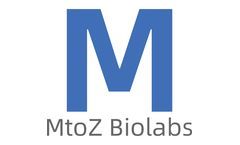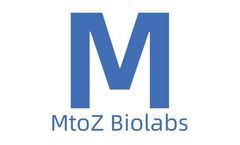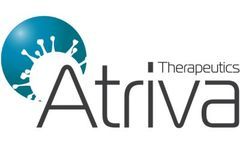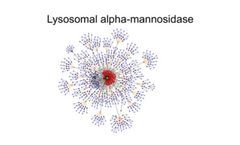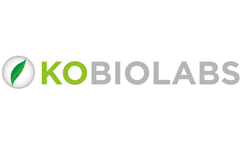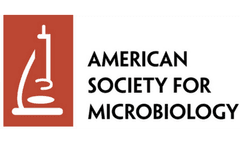Culture Medium Articles & Analysis
19 articles found
The main components of the culture medium include water, protein, sugar, amino acids, vitamins, minerals, and other growth factors. ...
Since the production of recombinant protein vaccines involves the growth and expression of proteins in host cells (such as E. coli, yeast, mammalian cells or insect cells), the use of appropriate culture mediums is critical to successfully produce high-quality vaccines.Media component analysis is a crucial step in biotechnology and vaccine production. ...
In order to make the cells grow well in the serum-free medium, a certain amount of appropriate cytokines, such as EPO, NGF, PDGF, EGF, M-CSF, etc., must be added. Serum-free medium needs to be free of virus contamination, animal-free, stable between batches, etc. ...
The basic environmental requirements for optimal cell growth are: controlled temperature, substrate for cell attachment, appropriate growth medium and incubator to maintain correct pH and osmolarity. The most important and critical step in cell culture is the selection of an appropriate growth medium for in vitro culture. ...
Hepatocytes are the chief functional cells of the liver, responsible for the selective uptake, metabolism and excretion of most drugs. Cells for use in plate cultures or suspension assays represent a key tool for predicting properties such as hepatotoxicity, metabolism, and potential drug-drug interactions. ...
Twenty-four hours before the experiment, the growth medium was exchanged to medium with respective FBS or BSA concentration. ...
Host cell proteases play critical roles in catalysis, metabolic pathways, and turnover of extracellular waste, but when present in the cell culture medium, proteases may lead to product breakdown. This phenomenon occurs in serum-free media, where proteolytic degradation occurs due to the lack of serum protease inhibitors in chemically defined media. During cell ...
Transfer the culture medium containing nerve balls into a 15 mL conical tube. Clean the plate with a few of DPBS to maximize cell recovery. ...
In order to make the cells grow well in the serum-free medium, a certain amount of appropriate cytokines, such as EPO, NGF, PDGF, EGF, M-CSF, etc., must be added. Serum-free medium needs to be free of virus contamination, animal-free, stable between batches, etc. ...
In the group of startups focusing on enabling technologies the biggest subcategory is Cell Culture Media, where 2019 showed a real increase with a whole of eight new startups. This might be seen as the industry now being developed enough to show growing demand for cell culture media, and we’ve also heard multiple founders state that they started working on ...
Learning objectives By the end of this module, you should understand: Basal culture medium composition and sources; Serum-free medium; The use of growth factors in culture medium. Basal culture medium composition and sources *Grammar/syntax note: The words for ...
Lactobacillusstrains isolated from the vagina were cultured in MRS broth medium and subsequently filter-sterilised. The lactate concentration in the LCS was measured in accordance with the manufacturer’s instructions. ...
However, the cultural strategies of many medium sized and small cities focus more on social objectives. This seems to be the case for Greek cities of medium and small size. In order to determine the contemporary cultural strategies employed by local authorities and the State a survey was undertaken by the authors in 20 cities. ...
Human lymphocytes were treated in vitro with 5.0 γg/ml of curcumin for 30 min at 37°C then exposed to 1, 2 and 4 Gy γ-radiation. The lymphocytes were cultured in (RPMI) 1640 tissue culture medium and autologous serum (20%). Phytohemagglutinin and 5-bromodeoxyuridine (10 pM) were added upon the initiation of culture and harvesting ...
Entrepreneurs face different types of difficulties and operate in an unstable environment characterised by regional political chaos and local financial, legal, infrastructural, educational and cultural impediments. Small and Medium-sized Enterprises (SMEs) are the heart of any country; they empower its economy, heighten its competitive position, alleviate its ...
In this study, we showed that supplementing the culture medium with fibrinogen induced biofilm formation by Streptococcus suis in a dose-dependent manner. ...
Blood samples were prepared from 62 radiology workers and 29 individuals as controls, and lymphocytes were cultured in a culture medium. Results showed that the mean frequencies of the total chromosomal aberration in radiation workers are significantly higher than those in controls. ...
The serum from these samples was harvested, diluted in tissue culture medium and added to reporter cells. The toxicity or growth promoting activity of the serum was measured using a clonogenic assay coupled with immunocytochemical measurement of various proteins involved in apoptosis or growth. ...
Radiation sources used are 222Rn and his daughters 218Po and 214Po previously dissolved in culture medium. CD34+ cells are exposed to alpha radiation and cultured for different times and doses, and later, survival, apoptosis fraction and total cell death (apoptosis and necrosis) are analysed. There are significant differences between irradiated ...

